- Blog
- Ecommerce Recommendations: 23 Tips to Maximize Your Sales in 2025
Ecommerce Recommendations: 23 Tips to Maximize Your Sales in 2025
-
Nikolett Lorincz
- Ecommerce
- 6 min read
Table of Contents
Ecommerce is more than just putting products online and waiting for customers to find them. The secret to boosting ecommerce sales lies in how well you can anticipate and meet your customers’ needs.
This is where personalized recommendations come in.
In this article, we’ll uncover 23 actionable tips to maximize your sales through effective ecommerce recommendations.
From finding the perfect place for your recommendations to employing sophisticated algorithms, these strategies will help you create a customer experience that feels tailor-made for each customer.
Let’s get right into it!
What are product recommendations in ecommerce?
Ecommerce product recommendations are personalized suggestions that you display to online shoppers.
These recommendations are based on a variety of factors such as browsing history, purchase history, user behavior, and customer segmentation.
The goal is to inspire customers to add more items to their shopping carts by showcasing things they’ll be interested in.
Why should you display relevant recommendations?
Relevant suggestions improve the customer experience, making it easier for customers to find what they’re looking for.
This can lead to increased sales, higher average order value, and improved customer satisfaction.
Plus, when customers feel understood and valued, they’re more likely to return!
Here are some stats from Lifesight that show the difference ecommerce recommendations can make:
- Shoppers that clicked on recommendations are 4.5x more likely to add items to their cart and complete their purchase.
- 75% of customers are more likely to buy based on personalized recommendations.
- 52% of consumers would share personal data in exchange for product recommendations.
- 49% of consumers said they have purchased a product that they did not initially intend to buy after seeing a personalized recommendation.
How do ecommerce product recommendation engines work?
Ecommerce product recommendation engines are the hidden wizards behind personalized shopping experiences. These sophisticated systems use advanced machine learning algorithms and vast amounts of data to generate tailored product suggestions for each user.
But how do they work, exactly?
The first step in creating personalized recommendations is collecting data. Ecommerce platforms gather a variety of data points from users, including browsing history, purchase history, behavioral data, and demographic information.
Once the data is collected, it needs to be processed and analyzed. This involves cleaning and organizing data and grouping users based on similar behaviors and preferences.
The heart of an ecommerce product recommendation engine lies in its machine learning algorithms. These algorithms analyze the processed data to identify patterns and trends.
Types of product recommendation engines
Now that you understand how recommendation engines work, it’s time to explore the different types of product recommendation engines.
1. Collaborative filtering
Collaborative filtering is one of the most widely used recommendation techniques. It suggests items based on user behavior and preferences, leveraging the collective behavioral data of similar users.
Benefits:
- Highly effective at generating personalized recommendations.
- Continuously improves as more data is collected.
Drawbacks:
- Struggles with new users or items due to the “cold start” problem, where there isn’t enough data to make accurate recommendations.
- Can sometimes lead to a “filter bubble,” limiting exposure to diverse products.
2. Content-based filtering
Content-based filtering analyzes the properties or descriptions of items that a user has frequently purchased or shown interest in. This method recommends products with similar attributes to past purchases.
Benefits:
- Can recommend niche or new items that share attributes with previously liked products.
- Doesn’t rely on the behavior of other users, making it more personalized to the individual.
Drawbacks:
- May not capture the full range of user preferences if only item attributes are considered.
- Can become too narrow, suggesting only very similar items and missing broader interests.
3. Hybrid systems
Hybrid recommendation systems combine both collaborative and content-based filtering to mitigate the limitations of each method. By leveraging the strengths of both approaches, hybrid systems provide more accurate and comprehensive recommendations.
Benefits:
- More accurate and diverse recommendations by combining the strengths of both collaborative and content-based methods.
- Can handle a wider variety of user and item data, improving the overall recommendation quality.
Drawbacks:
- More complex and resource intensive to implement and maintain.
- Requires careful balancing and tuning of different algorithms to ensure optimal performance.
23 strategies for effective recommendations
Ok, we’ve made it! It’s time to check out 23 strategies for effective personalized product recommendations that can help you maximize your sales and enhance the customer experience.
1. Display products based on browsing history
One of the simplest yet most effective ways to increase sales is by displaying products based on a visitor’s browsing history. This strategy leverages the power of personalization to showcase items that a customer has shown interest in, making it more likely that they’ll add these products to their cart.
Sephora, a leading beauty and skincare retailer, effectively uses browsing history to enhance the shopping experience. When a customer visits Sephora’s website and browses through various makeup or skincare products, the site tracks this activity.
On the customer’s next visit, Sephora’s homepage features a “Chosen For You” section recommending items based on the user’s browsing history.

2. Use “Frequently bought together” recommendations
Another powerful strategy to boost your sales is to utilize “Frequently Bought Together” recommendations. This approach suggests products that are often purchased together, encouraging customers to add more items to their carts, thereby increasing the average order value.
Amazon has mastered this technique. When you browse a product on Amazon, you’ll often see a section titled “Frequently bought together” just below the main product details.
For example, if you’re looking at a gaming headset, Amazon suggests a gaming mouse.
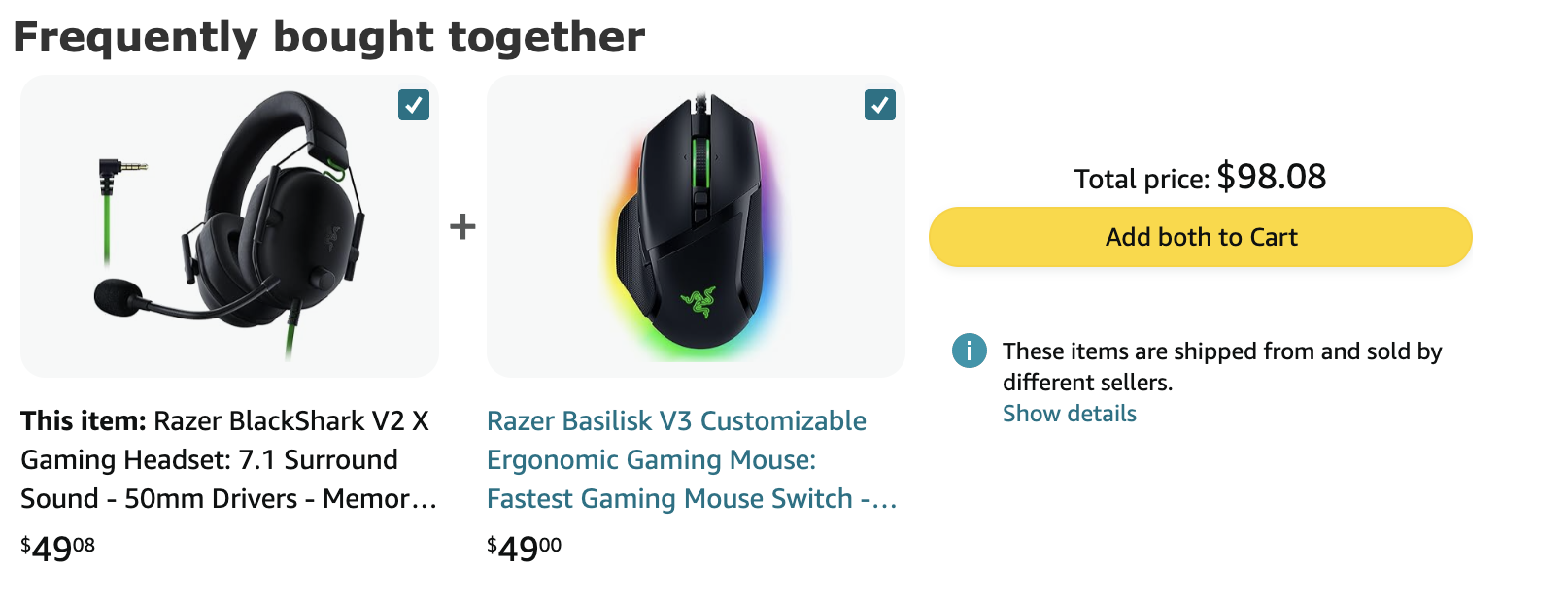
3. Promote best-selling products
Showcasing your best-selling products is a great way to inspire new customers and give them the confidence to make that first purchase..
Highlighting popular items can serve as social proof, demonstrating that lots of other people like these products, which means that they’re likely to satisfy new buyers as well.
Check out how Obvi effectively promotes its best-sellers on its homepage.
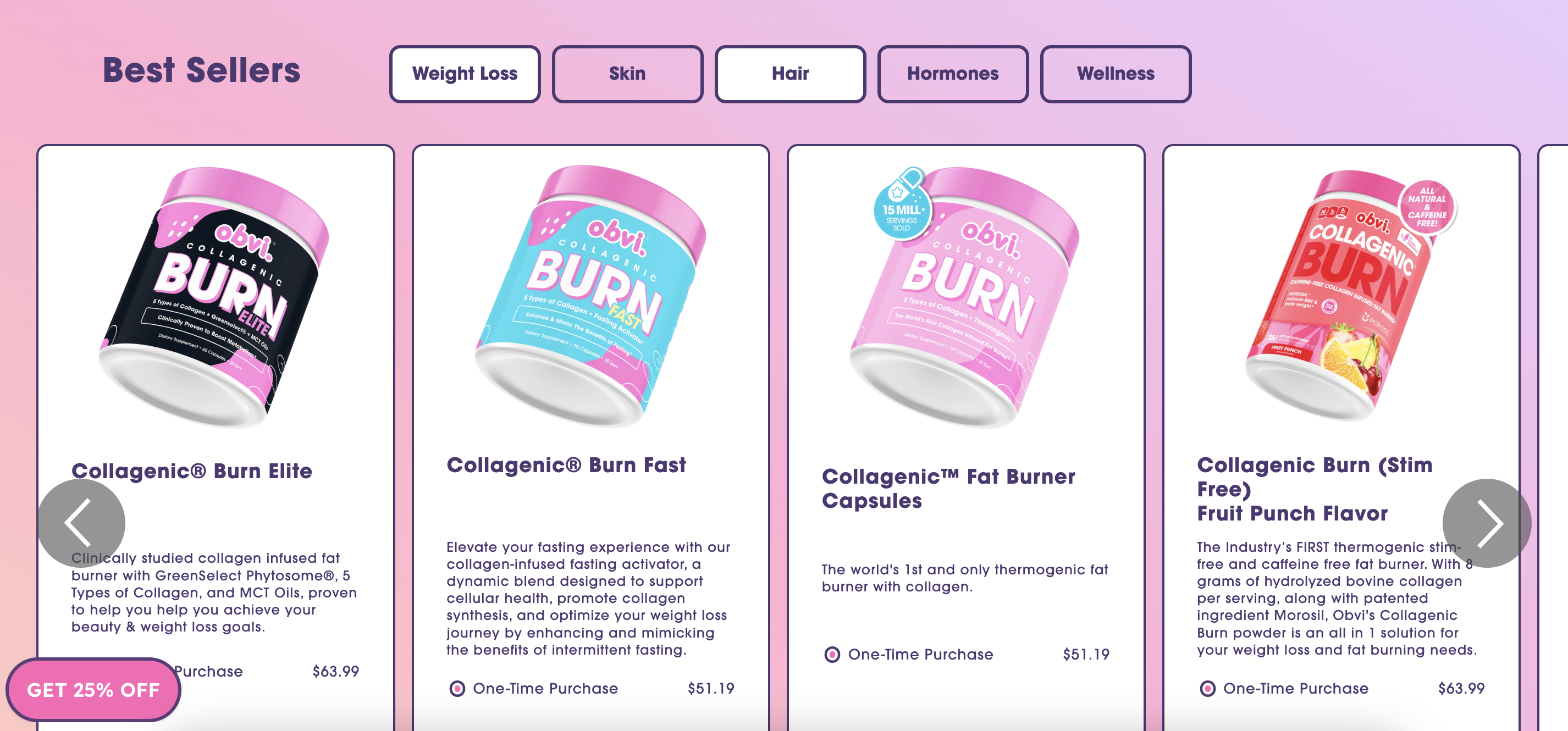
4. Introduce shoppers to new arrivals
Keeping your inventory fresh and exciting is crucial for attracting repeat visitors and converting new customers. Regularly showcasing new arrivals can create a sense of anticipation and urgency, encouraging shoppers to check back frequently (and make purchases).
By featuring new products prominently on your homepage, you can grab the attention of site visitors and highlight the latest additions to your online store.
Here’s an example from Gymshark. When you visit their ecommerce site, you’re greeted with a dynamic section showcasing their latest drops.
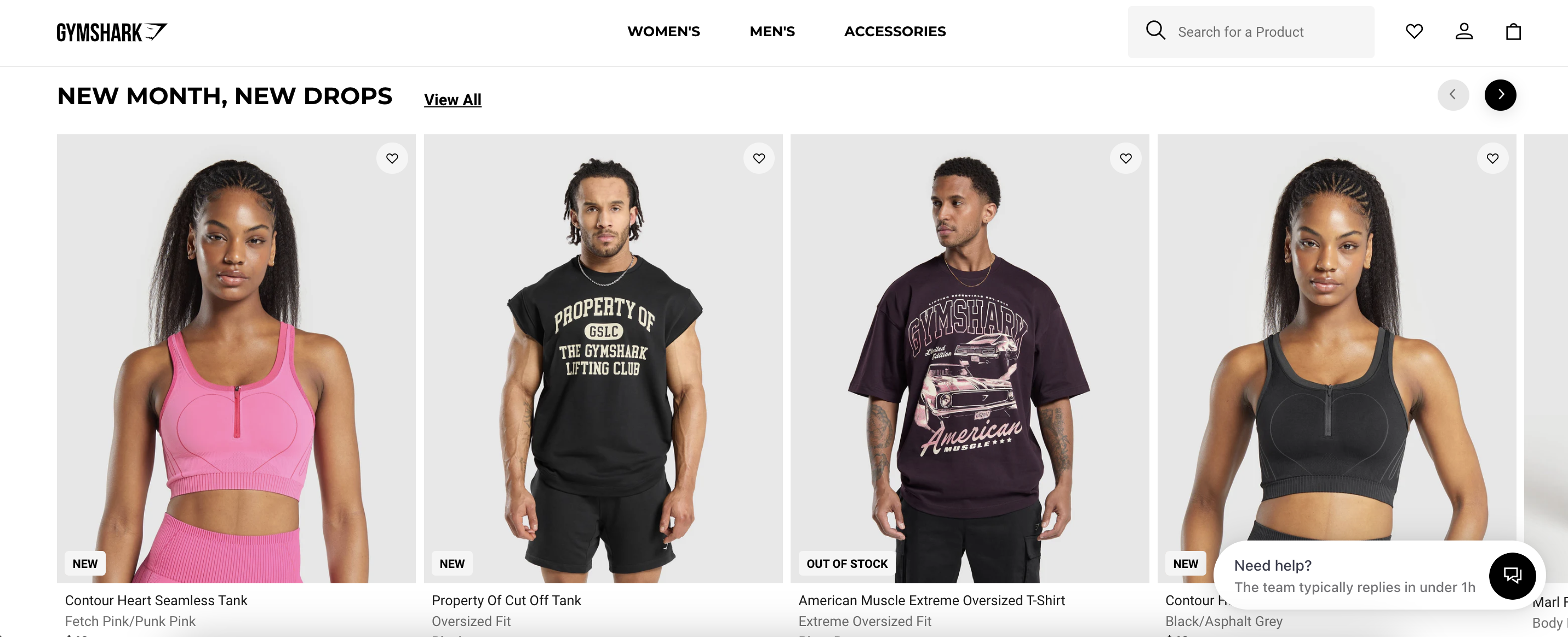
5. Feature new items for each category
To keep your store’s offerings fresh and engaging, don’t stop at the homepage—you can also highlight new products within each category.
You can do this with dedicated sections or banners on category pages, drawing attention to new arrivals that might otherwise be overlooked by customers browsing familiar products.
When you navigate to a specific product category page on Stanley’s ecommerce store (like the Quencher category page), you’ll find a section right at the top dedicated to new arrivals.
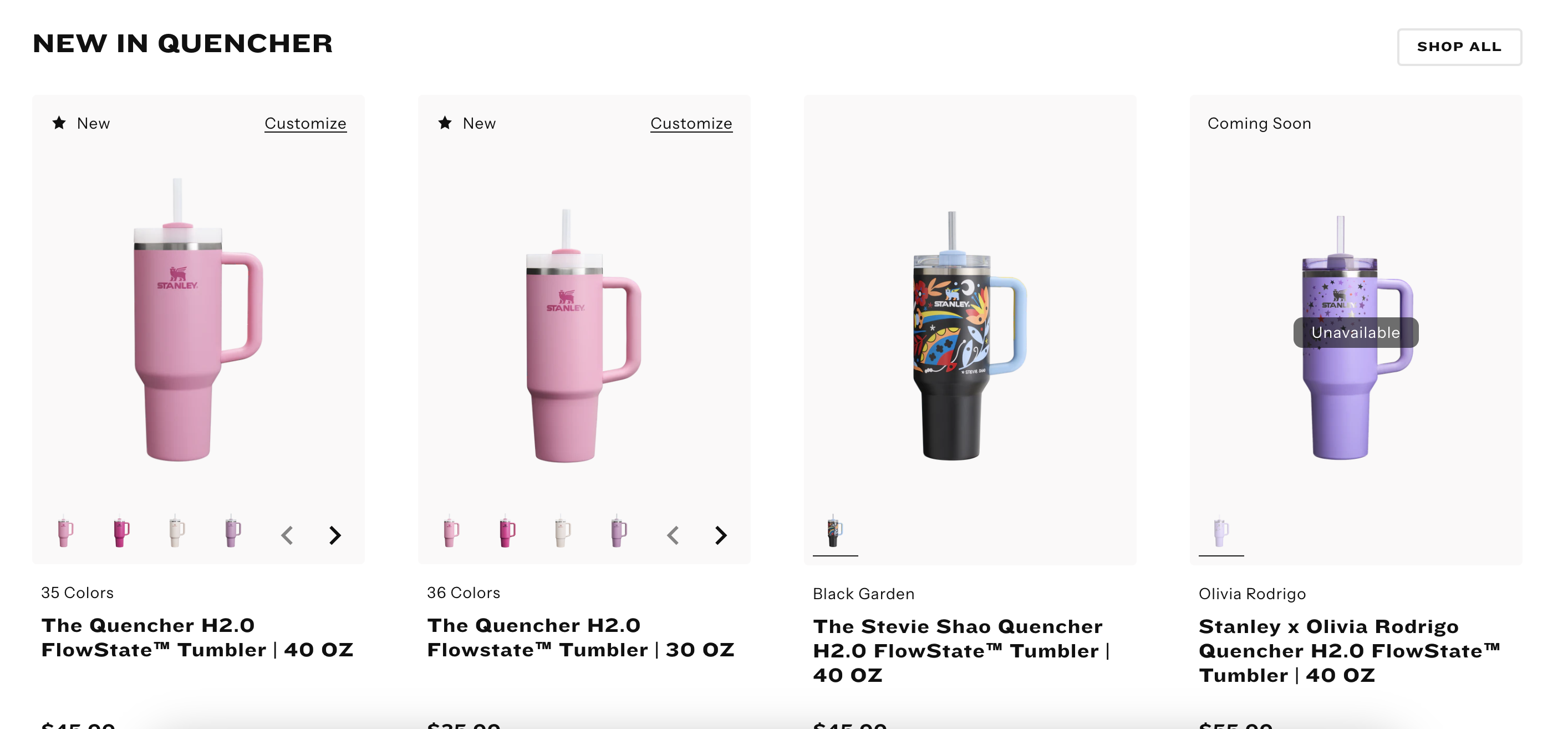
6. Highlight best sellers for each category
Showcasing the best sellers in each category is a great way to guide customers towards popular and highly-rated products.
These sections can provide customers with quick access to top-rated items, making their shopping experience smoother and more satisfying.
Caraway does an excellent job of highlighting best sellers within each category.
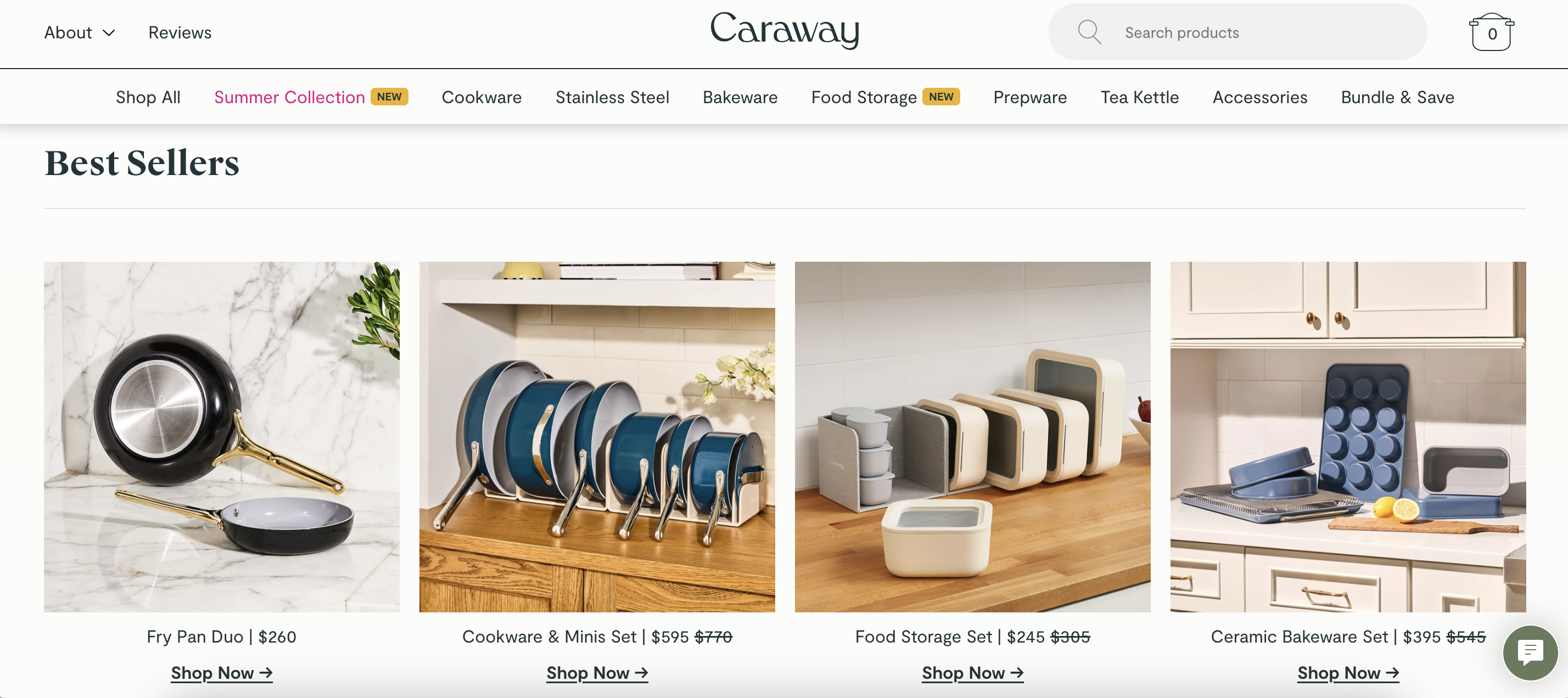
7. Cross-sell relevant products
Cross-selling is an effective strategy that involves suggesting complementary products to customers based on what they’re currently viewing.
These suggestions appear on the product page, encouraging customers to consider adding these complementary items to their cart.
Best Buy excels at cross-selling by suggesting relevant products when a customer is viewing an item. For instance, if you’re looking at a laptop on Best Buy’s website, you might see recommendations for related items such as a laptop bag, a USB drive, and an HDMI cable.
The prompt “Have everything you need?” encourages customers to think about additional accessories that would enhance their purchase, making it easy for them to add these items to their cart with a single click.

8. Generate product bundles
Creating product bundles is an effective way to encourage higher spending by offering complementary products together at a discounted price.
This can be particularly effective for products that naturally go well together.
Here’s another example from Best Buy. When a customer views a laptop, Best Buy highlights a bundle that includes the laptop and a Microsoft Office subscription.
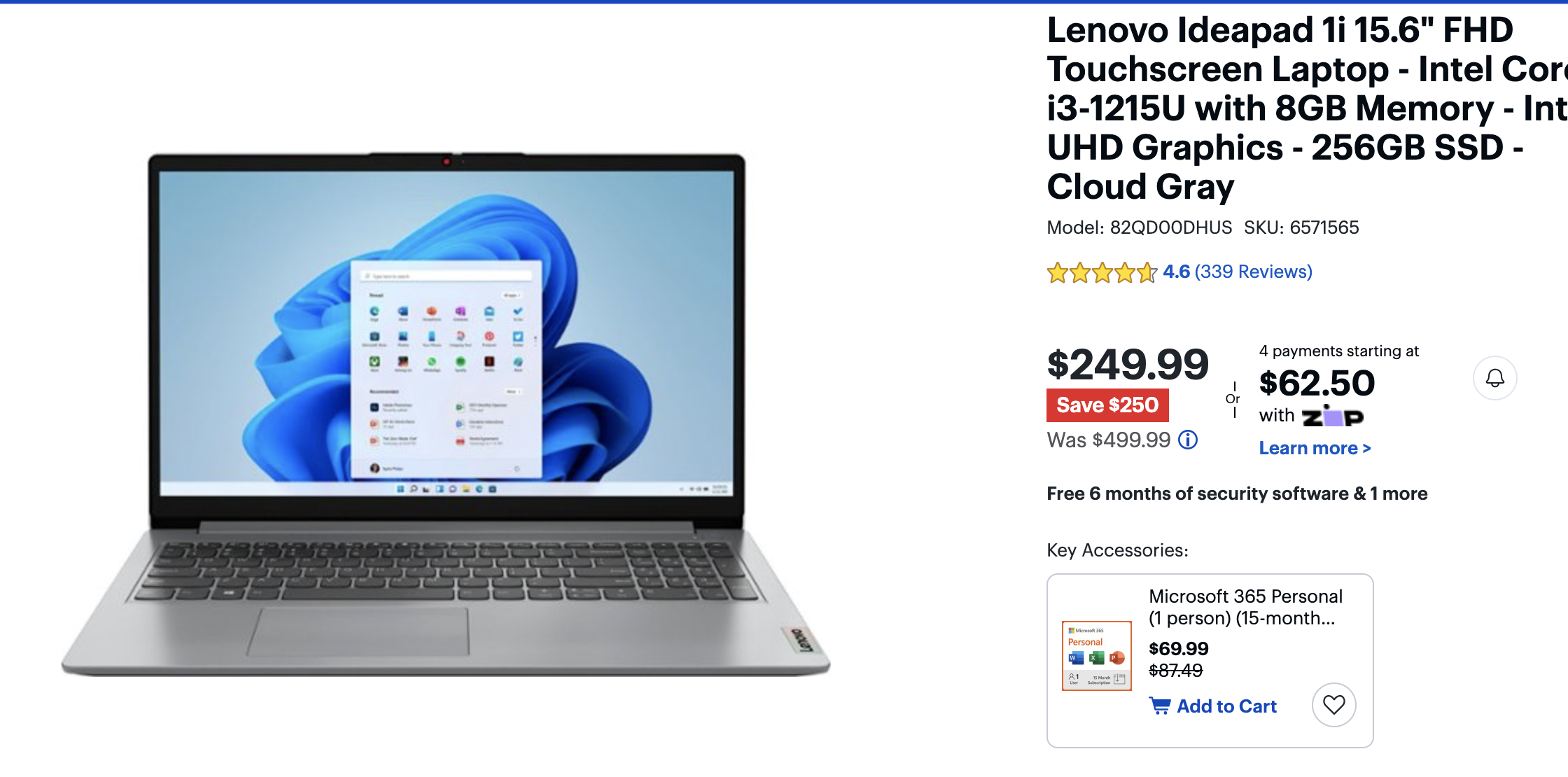
9. Offer relevant products on the cart page
The cart page is a crucial point in the customer journey where you can make additional product recommendations to increase the order value.
Suggesting complementary items at this stage can entice customers to add more products to their cart before completing their purchase.
Bubble Skincare implements this strategy beautifully. When customers view their cart on Bubble Skincare’s online store, they see a section labeled “We think you’ll love.”
This section showcases products that complement the items already in the cart, like a hydrating moisturizer to go with a cleanser for a complete skincare routine.
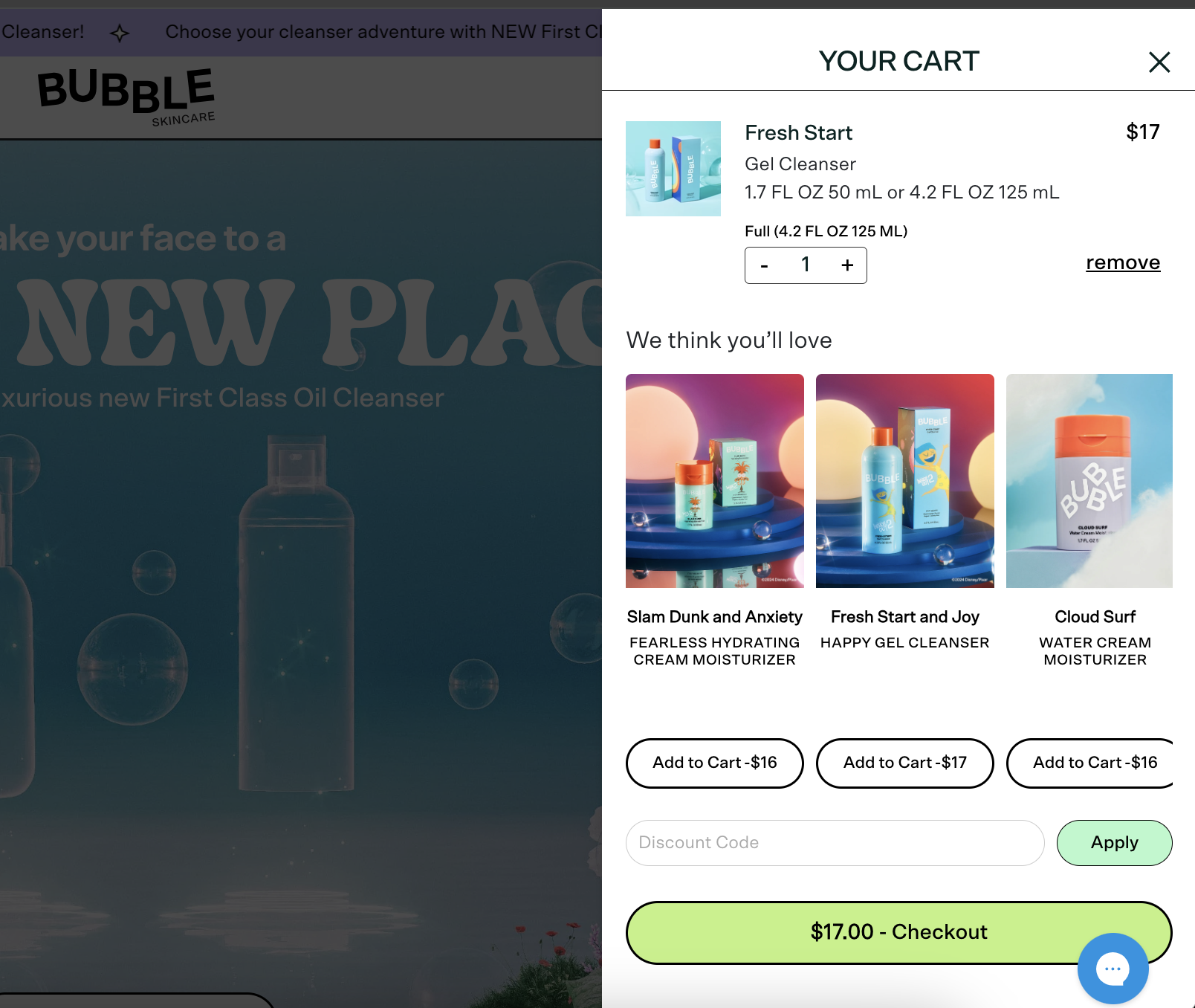
10. Use product recommendations to upsell
Upselling is a powerful tactic that involves encouraging customers to purchase a higher-end product or an upgrade from what they initially considered.
When a customer is viewing a product, you can recommend a premium version or an upgraded model. These recommendations should highlight the added benefits and features of the higher-end product, making a compelling case for why the customer should consider spending a bit more for a superior option.
Imagine a customer browsing for a basic laptop. On the product page, there’s a section suggesting an upgraded version of the laptop with more RAM, better battery life, and a faster processor.
11. Use “Get the look” recommendations
“Get the Look” recommendations are a powerful way to inspire customers by showcasing complete outfits or sets based on what models are wearing in your product images.
When customers see a model wearing a stylish outfit or using a set of products, “Get the Look” recommendations allow them to easily add all the items to their cart.
Check out this example from Gymshark:
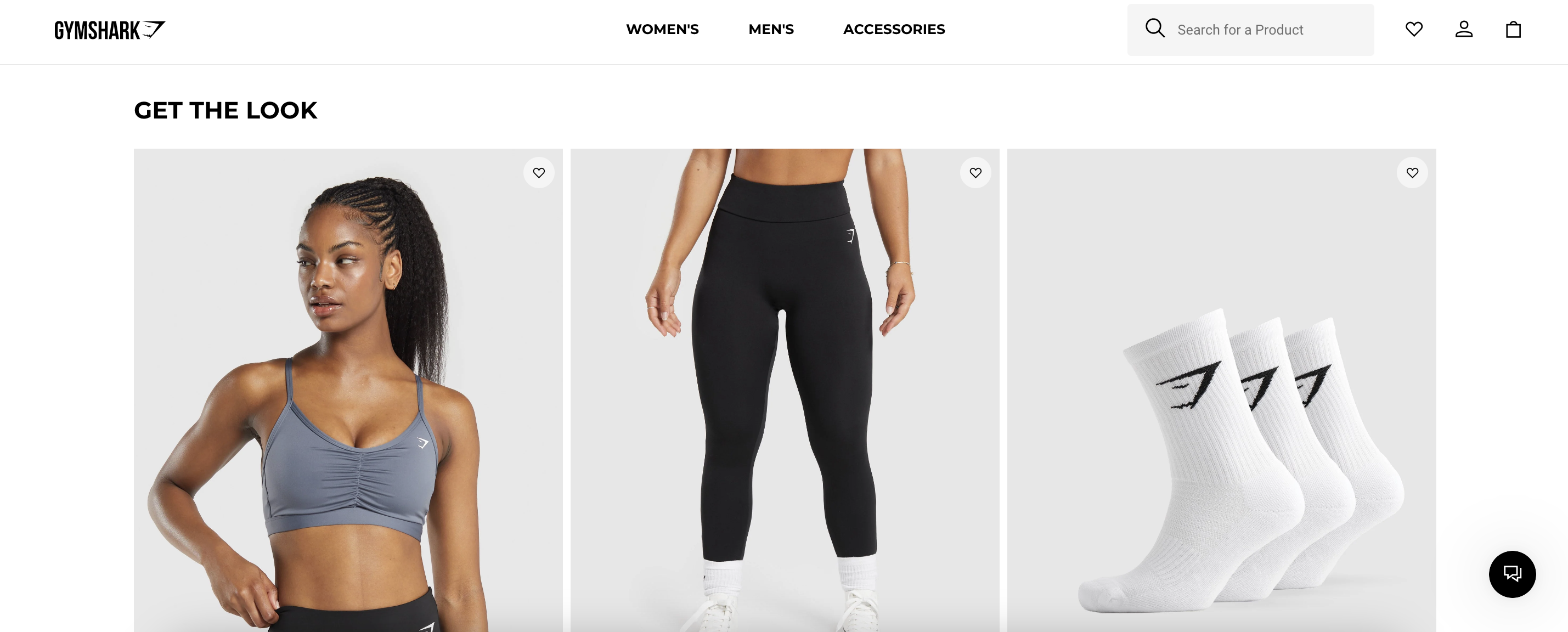
12. Make seasonal recommendations
Tailoring product recommendations based on seasonal trends is a highly effective strategy to keep your offerings relevant and timely. By showcasing products that are particularly useful or popular during specific times of the year, you can drive higher engagement and sales.
For example, in the warmer months Glossier highlights their summer collection prominently on the homepage.
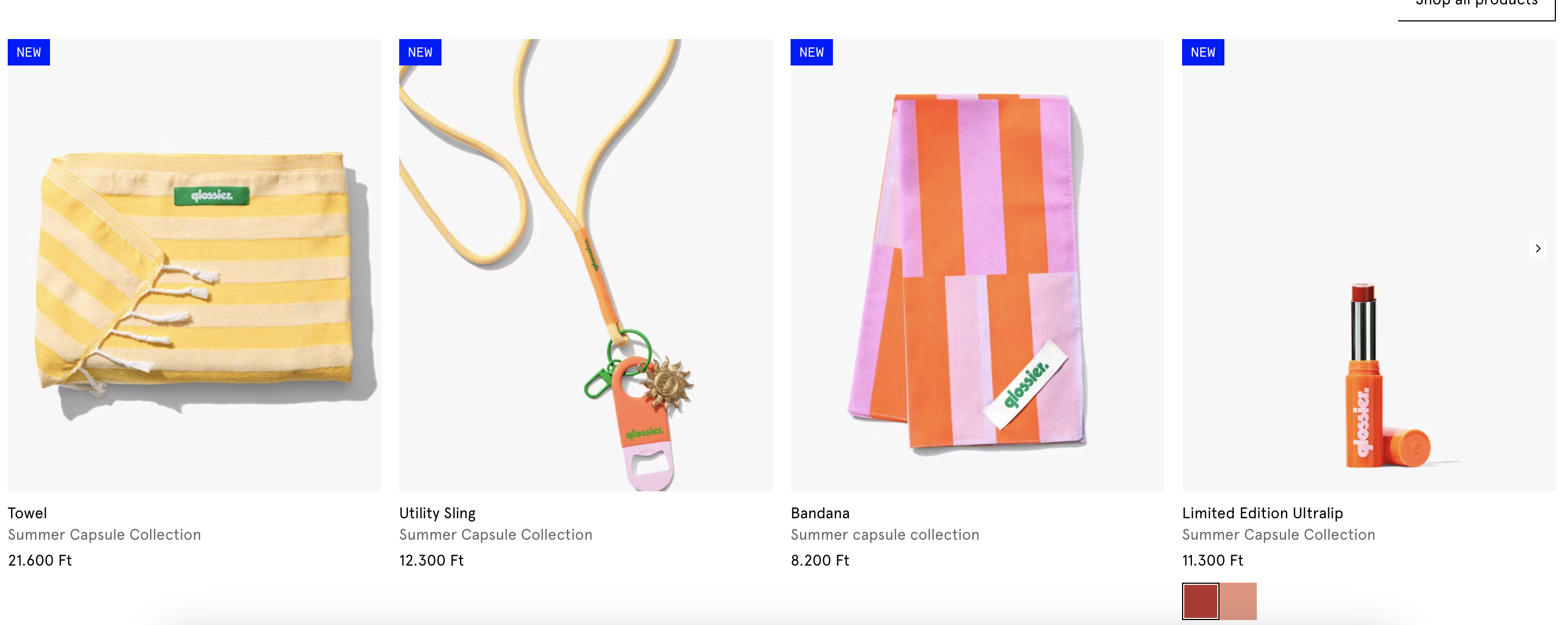
13. Display personalized product recommendations on an exit-intent popup
Exit-intent popups are a strategic tool designed to catch visitors just before they leave your ecommerce site, offering personalized product recommendations that can entice them to stay and complete a purchase.
This last-minute effort can significantly reduce abandonment rates and increase conversions.
Millie n Me used this strategy and achieved a 5.65% increase in revenue and a 15.72% boost in their ecommerce conversion rate.
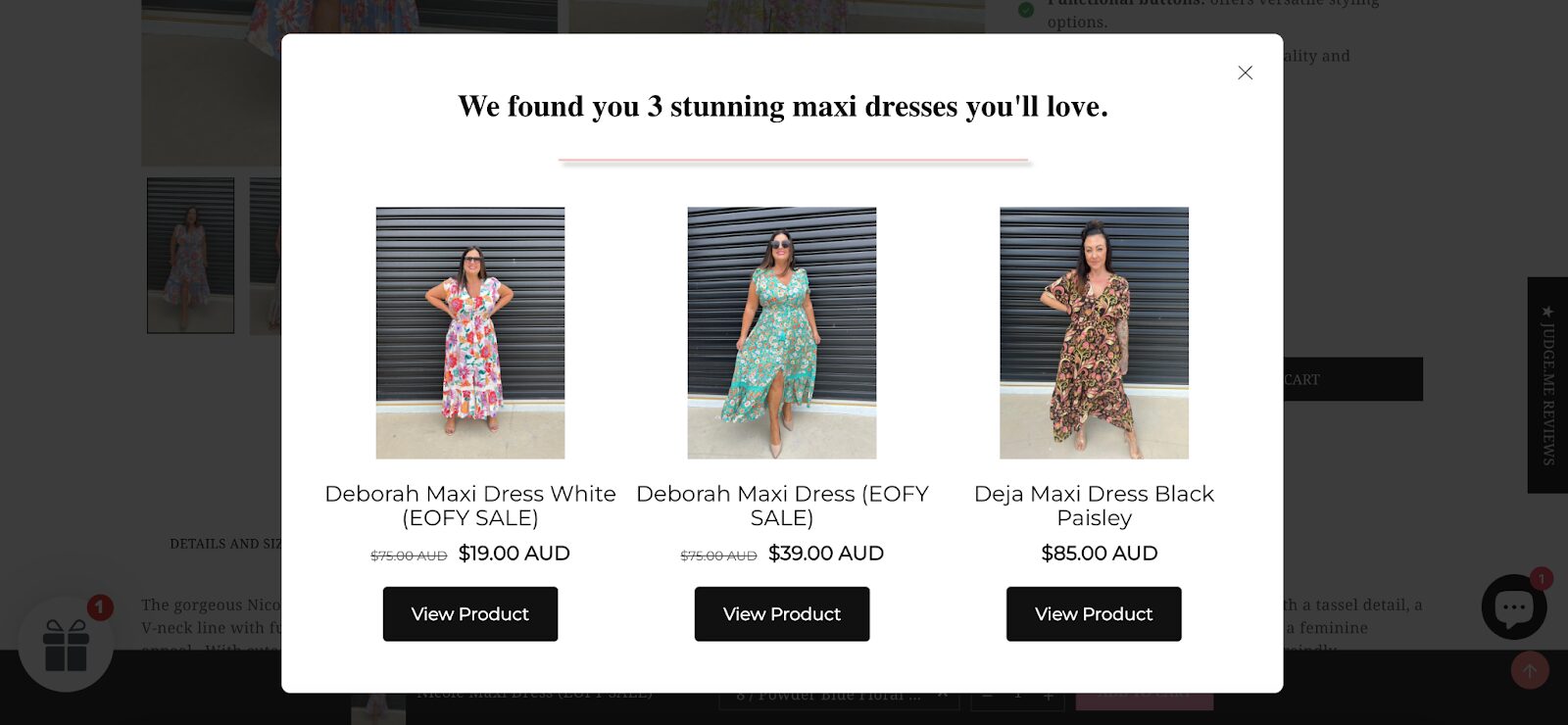
Try these product recommendation popups for free:
14. Show a browsing reminder popup for returning visitors
Greet returning visitors with a browsing reminder popup that highlights their previous interactions with your ecommerce website.
This personalized approach helps them pick up right where they left off.
Check out how Tiny Beast Designs used this strategy:
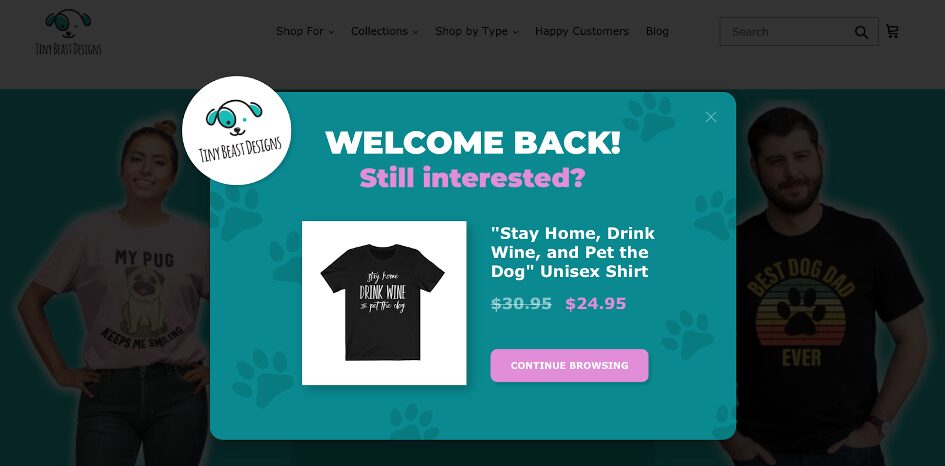
Here are some ready-to-use templates if you’d like to get started with this recommendation strategy:
15. Embed relevant recommendations in blog posts
Incorporating product suggestions directly within your blog content can be a seamless and effective way to drive traffic and boost sales.
By embedding relevant recommendations, you not only provide valuable information to your readers but also introduce them to products that enhance their experience and meet their needs.
Check out this example from SmoothieBox suggesting products that relate to the content:
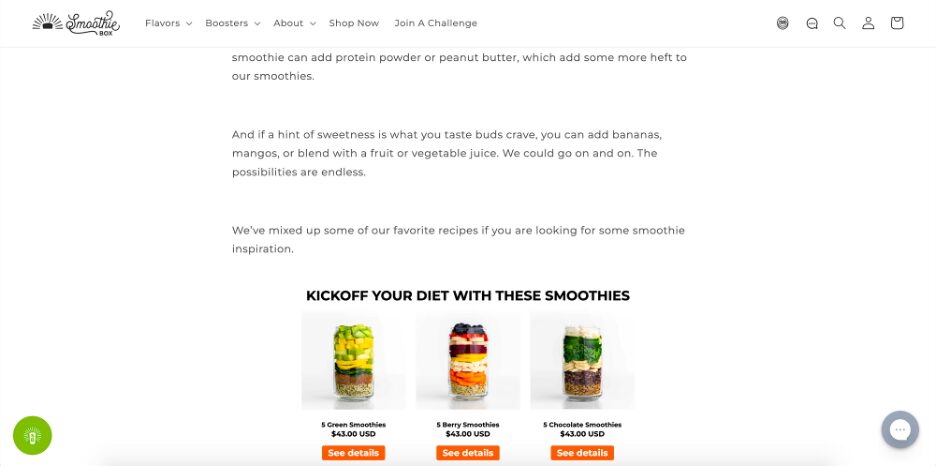
16. Show product recommendations based on quiz results
Personalizing product suggestions based on quiz results is an engaging and interactive way of connecting with customers.
Interactive quizzes can gather valuable information about a customer’s preferences, needs, and behaviors. Based on the quiz results, you can provide personalized product recommendations that align with their responses.
Check out this example from Crown & Paw. They used a popup that offered a discount on the first page, then asked a few simple questions:
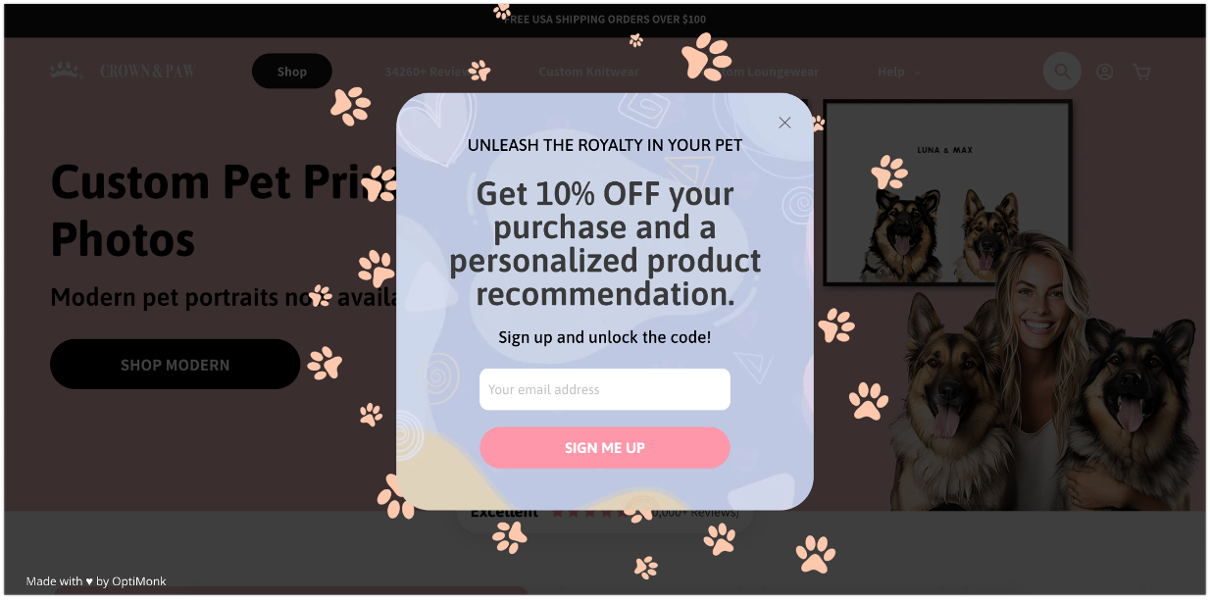
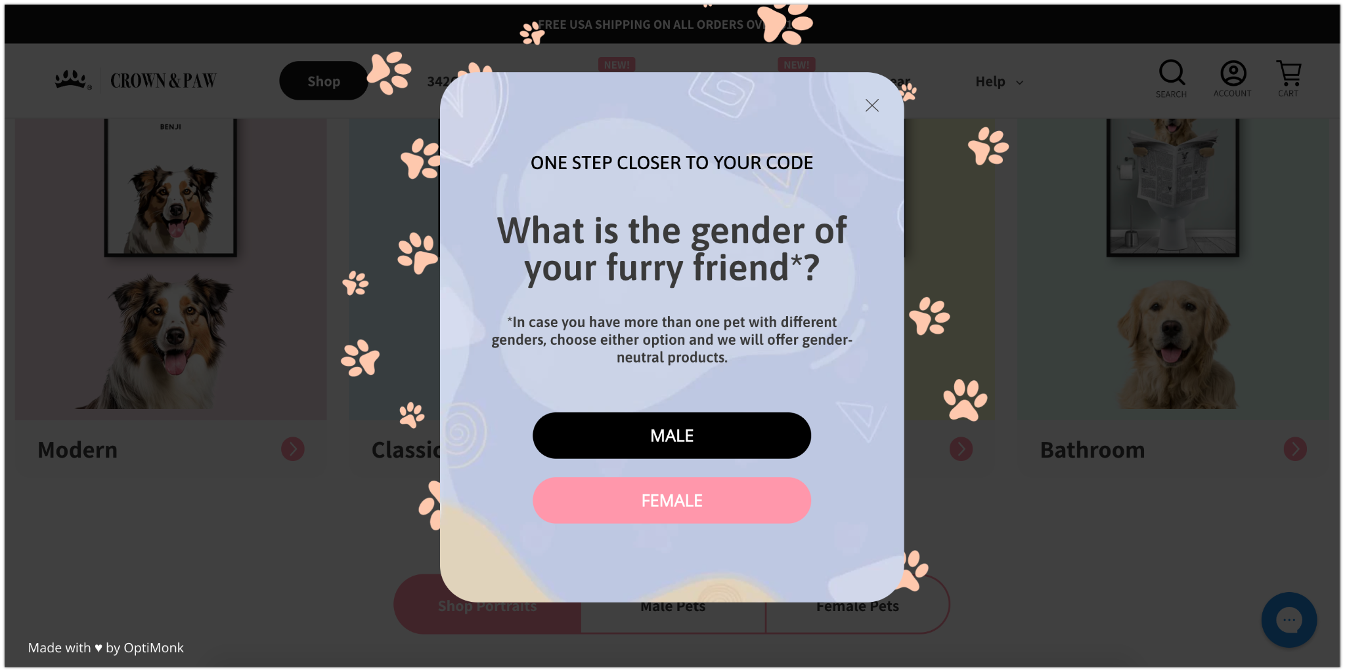
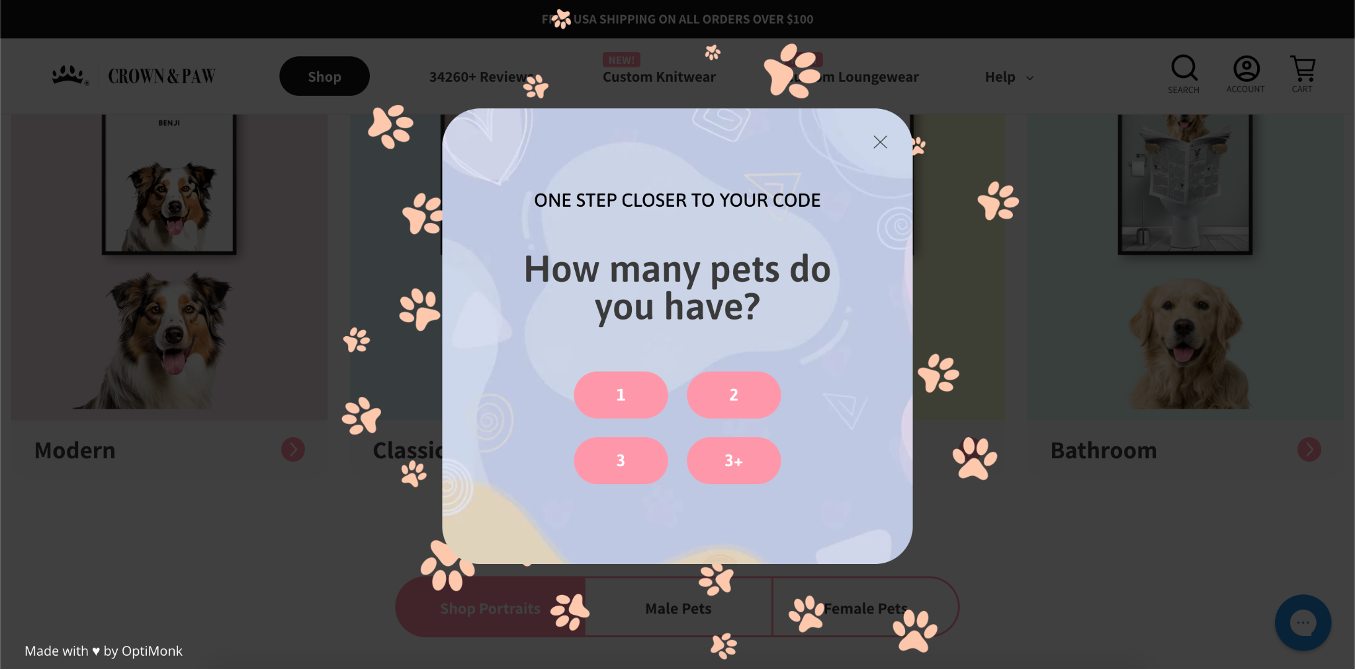
In the last step, they revealed the discount code with some relevant suggestions based on the visitor’s answers:
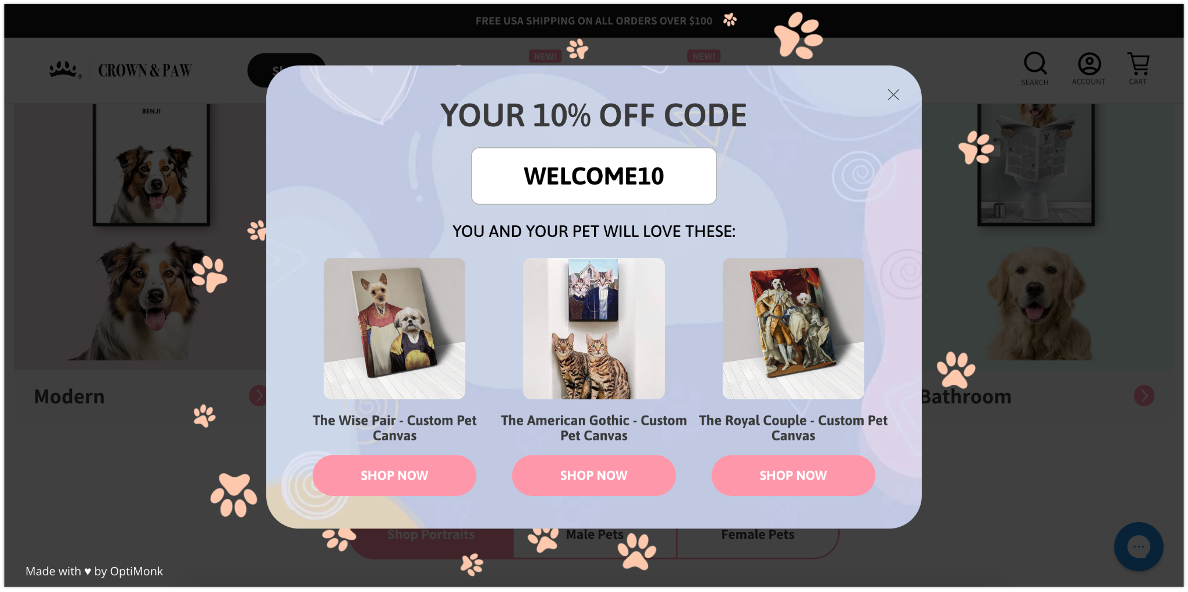
17. Make sure recommendations are relevant and timely
Updating product recommendations to stay relevant is crucial for maintaining customer interest and maximizing sales.
Regularly review and update your recommendation algorithms to ensure they’re aligned with the latest customer data and market trends. This involves using real-time data to adjust suggestions based on what’s currently popular, new arrivals, and seasonal shifts.
18. Keep popular products highlighted during peak seasons
Focusing on trending items during busy shopping periods can significantly boost your sales.
During peak seasons (like holidays or sales events), identify the most popular products and feature them prominently on your website and in marketing campaigns. This can include best-sellers, trending items, or products with high ratings.
This strategy capitalizes on the increased shopping activity and drives higher sales.
19. Show recently viewed recommendations
Reminding customers of items they’ve recently browsed can encourage them to complete their purchase.
This tactic leverages the customer’s prior interest and helps them easily find products they’re considering.
20. Highlight best-sellers on popups
Using popups to highlight best-selling items can capture customer attention and encourage quick decisions.
When a customer navigates your site, show a popup that showcases best-selling items. You can trigger the popup based on the customer’s browsing behavior or after they spend a certain amount of time on your site.
21. Remind abandoning visitors about products left in the cart
Showing popup reminders to site visitors who left items in their cart can encourage them to complete their purchases.
This tactic addresses cart abandonment by re-engaging customers with their pending items.
When a visitor attempts to leave your site with items still in their cart, trigger a popup reminding them of their cart contents. Include a compelling message and possibly an incentive to complete the purchase.
22. Promote products with the most reviews
Highlighting top-reviewed products is a great way to build trust and encourage purchases. Reviews act as powerful social proof, enhancing the credibility of your products and convincing potential buyers of their value.
Check out this example from AVON, where they highlight products with numerous positive reviews.

23. Never stop A/B testing and optimizing product recommendations
Continuously refining your product recommendation strategy through A/B testing is essential for maintaining an effective and engaging shopping experience.
A/B testing involves comparing two versions of a webpage or element to see which performs better.
For product recommendations, you can test various aspects, such as the placement of recommendations, the type of products suggested, the design and wording of recommendation sections, and the personalization algorithms used.
By analyzing the results, you can make data-driven decisions to optimize your recommendations.
How to choose the right recommendation software for your ecommerce store?
When choosing ecommerce recommendation engine software, consider the following:
- The types of recommendations the software can make.
- The quality and relevance of the recommendations.
- The analytics and insights provided.
- Compatibility with your ecommerce platform.
- The cost and value for the money.
Popular options include OptiMonk, Algolia, Bloomreach, Clerk, Emarsys, and Nosto. Before making a decision, compare several engines side by side and test their customer support.
Wrapping up
Effective product recommendations can transform your ecommerce store by driving sales and enhancing customer satisfaction.
By leveraging these 23 strategies, you’ll be able to create a personalized shopping experience that keeps customers coming back for more.
Want to get started with an easy-to-use product recommendation solution? Give OptiMonk’s product recommendation popups a try!
Migration has never been easier
We made switching a no-brainer with our free, white-glove onboarding service so you can get started in the blink of an eye.

What should you do next?
Thanks for reading till the end. Here are 4 ways we can help you grow your business:
Boost conversions with proven use cases
Explore our Use Case Library, filled with actionable personalization examples and step-by-step guides to unlock your website's full potential. Check out Use Case Library
Create a free OptiMonk account
Create a free OptiMonk account and easily get started with popups and conversion rate optimization. Get OptiMonk free
Get advice from a CRO expert
Schedule a personalized discovery call with one of our experts to explore how OptiMonk can help you grow your business. Book a demo
Join our weekly newsletter
Real CRO insights & marketing tips. No fluff. Straight to your inbox. Subscribe now
Nikolett Lorincz
- Posted in
- Ecommerce
Partner with us
- © OptiMonk. All rights reserved!
- Terms of Use
- Privacy Policy
- Cookie Policy
Product updates: January Release 2025








